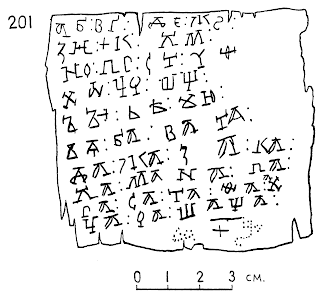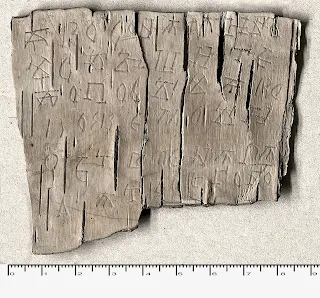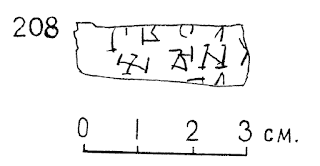It wouldn’t be wrong to say that history as written in history books and as taught in classrooms is boring. Centuries of history, boiled down to merely socio-economic trends, major cultural shifts, and politics at best, while however important, can easily bore anyone. Not to mention it removes the humanity out of history, it distorts our idea of ancient people, they lack individuality. We never really understand the lives of those people this way; most modern people have the idea that people in the past were simple, brutish and far removed from us. But History was built on the lives of millions of individual people, not just great men like Julius Caesar, Alexander the Great or Catherine the Great but also people around them, Caesar’s cook, Alexander’s cobbler, Catherine’s servant, the servants’ kids, and on and on. All these individuals played their part in shaping the world we live in. These people lived their lives as we do, we may not have the same lifestyle or quality of life, but we still have that same spark of humanity.
Background
In 1951, archaeologists discovered the first Old Russian Birch-Bark texts. Before paper was widely available, the common folk used soft birch bark to inscribe text on by scratching its surface with typically metal or bone implements.[1][2] As of 20th June 2025, 1292 such birch bark inscriptions have been found.[3] Russian Historian Valentin Yanin has estimated that there may be about 20,000 more birch bark texts yet to be excavated from beneath Novgorod.[1][4]
| Fig 1: Map of Russia – Novgorod Oblast |
Located in Western Russia along the shores of river Volkov, about 160 Kilometres (100 Miles) South of St. Petersburg, the city of Novgorod is one of Russia’s oldest cities. Novgorod was a major trade centre in the medieval ages and, as such, had a high literacy rate.[1][5][6] The Novgorod birch bark texts comprise of commercial transactions, transcriptions of Biblical passages, personal letters, etc.
Onfim
Onfim’s manuscripts are a bit different however. Most of his manuscripts are filled with doodles that wouldn’t look out of place even in a modern kindergarten classroom. Researchers believe Onfim to have been around 6 or 7 years old, by the way he was writing and doodling.[6]
The educational system of Novgorod applied to both sexes and different classes, which was remarkable for the time. Onfim was taking part in this educational system and was practising his alphabets, repeating syllables, and writing texts that would be familiar to him (oftentimes, these texts would be religious psalms, which were commonly studied at the time).
Onfim’s Manuscripts
Archaeologists have attributed 17 birch barks to Onfim of which, 5 are text only while the other 12 have doodles.
Certificate No. 199
| Fig. 2.1: Photo of Certificate No. 199 | Fig. 2.2: Drawing of Certificate No. 199 |
Here, Onfim is practicing the letters of the Cyrillic alphabets and sequences of syllables (refer to Fig. 2.2 left side), and then he drew himself as an imaginary creature with a long neck, curly tail, and pointy ears. The creature appears to be either breathing fire or have a frayed tongue. In the text box near the creature’s head he writes, “Bow (Greetings) from Onfim to Danilo”, likely a friend or classmate. Below the text box, he also writes, “I am a Beast” (refer to Fig. 2.2 right side).[3]
Certificate No. 200
| Fig. 3.1: Photo of Certificate No. 200 | Fig. 3.2: Drawing of Certificate No. 200 |
At the top right corner, he was writing the letters A through K of the Cyrillic alphabet, and then he likely got bored and drew himself a horseman (with 3 and 3 fingers on his hands) striking an enemy (also with 3 and 3 fingers on his hands). He even signed this drawing as “Onfim”.[3]
Certificate No. 201
| Fig. 4.1: Photo of Certificate No. 201 | Fig. 4.2: Drawing of Certificate No. 201 |
Cyrillic alphabets and sequences of syllables.[3]
Certificate No. 202
| Fig. 5.1: Photo of Certificate No. 202 | Fig. 5.2: Drawing of Certificate No. 202 |
Here, he has drawn 2 people, one slightly bigger with 6 and 8 fingers on his hand, and one slightly smaller with 3 and 3 fingers on his hands. The text besides them (depending on the translation) reads either, “At Dmitr take reporting (?)”, or “To take debts from Dmitr.”[3]
Certificate No. 203
| Fig. 6.1: Photo of Certificate No. 203 | Fig. 6.2: Drawing of Certificate No. 203 |
Here it appears to be a drawing of 2 children playing around a tree with one of them hiding behind the tree. One child has 4 and 3 fingers on his hands (possibly Onfim himself), and the child hiding behind the tree has 4 and 4 fingers on his hands. Above the drawing he writes, “Lord, help your servant Onfim.”[3]
Certificate No. 204
| Fig. 7.1: Photo of Certificate No. 204 | Fig. 7.2: Drawing of Certificate No. 204 |
Again practicing the syllables.[3]
Certificate No. 205
| Fig. 8.1: Photo of Certificate No. 205 | Fig. 8.2: Drawing of Certificate No. 205 |
This one was left unfinished by Onfim, he was writing the letters of the Cyrillic alphabet. The unfinished text to the right was clearly meant to be “Onfim”. At the bottom, there is an unfinished drawing, which could be an unfinished curved bow.[3]
Certificate No. 206
| Fig. 9.1: Photo of Certificate No. 206 | Fig. 9.2: Drawing of Certificate No. 206 |
The text here is, incoherent to say the least. It begins with the words “like in”, anything after that is incomprehensible. Below the text, he drew 7 children holding hands, probably him and his friends. The 7 children have, 3 and 4, 3 and 3, 3 and 4, 5 and 4, 5 and 5, 3 and 4, and 4 and 5 fingers respectively.[3]
Certificate No. 207
| Fig. 10.1: Photo of Certificate No. 207 | Fig. 10.2: Drawing of Certificate No. 207 |
Here, another one without any drawings. The text roughly translates to, “Please contact us before the end. How can you contact your employer?”[3]
Certificate No. 208
| Fig. 11.1: Photo of Certificate No. 208 | Fig. 11.2: Drawing of Certificate No. 208 |
There isn’t much on this small snippet, but judging by the handwriting, it too was attributed to Onfim.[3]
Certificate No. 210
| Fig. 12.1: Photo of Certificate No. 210 | Fig. 12.2: Drawing of Certificate No. 210 |
This birch bark was found torn. On the left side, there is the end of a word, “-avle”, and there is a drawing of a person with 4 fingers on his left hand, his right hand is cut off due to the birch bark being torn. On the left side there is another hand with 5 fingers on it, the part of the birth bark with the person who the hand belongs to was also torn.[3]
Certificate No. 331
| Fig. 13.1: Photo of Certificate No. 331 | Fig. 13.2: Drawing of Certificate No. 331 |
The text here translates to, “… the word is bad. gyu let on not azo. Lord, don’t be rude about this …” The carelessness of the handwriting makes it hard to interpret what exactly the text is meant to be, but it is probably of a church character.[3]
Figure A
| Fig. 14: Drawing of Figure A |
This one is a drawing of horsemen. There are 2 of them on one rather long horse. They have 4 and 3, and 3 and 3 fingers on their hands. There is another smaller rider in the background with 3 and 5 fingers on his hands.[3]
Figure Б
| Fig. 15: Drawing of Figure Б |
This drawing depicts a battle. There are 3 horsemen (with 4 and 5, 5 and 3, and 3 and 3 fingers on their hands respectively) here with arrows flying in the air. 2 horsemen (on the left and in the middle) appear to be carrying quivers. Beneath the hooves of the horses lie 3 to 4 of their defeated enemies.[3]
Figure B
| Fig. 16: Drawing of Figure B |
A horseman with 3 fingers on both his hands, is depicted riding a horse while leading another.[3]
Figure Г
| Fig. 17: Drawing of Figure Г |
There are 2 large human figures here, one with 7 and 5 fingers, and another larger one with 3 and 4 fingers. With the second one, Onfim even made eyes with pupils.[3]
Figure Д
| Fig. 18: Drawing of Figure Д |
This one depicts 2 warriors in helmets with 3 and 5, and 4 and 4 fingers on their hands. The type of helmet depicted is quite accurate for the time and place. Onfim must have often seen warriors wearing such helmets on the streets. The two warriors seem to be carrying bows and quivers in their hands. One of them is nearly twice as big as the other.[3]
Analysis
We have 17 birch bark manuscripts attributed to Onfim judging by the similar handwriting and the art style, particularly the pitchfork hands and the lack of torso. None of the people drawn by Onfim has a torso; in all his drawings, 2 curved lines go down from the head and pass into the legs. Onfim’s age too was estimated by the fact that he was still practicing mostly alphabets and syllables, and the rather simplistic nature of his drawings. About his drawings, one detail in particular stands out; all of the hands he has drawn have a different number of fingers ranging for 3 to 8, most of the time (as in Certificate No. 202, 203, 206, 210, and Figures А, Б, Г and Д) even the number of fingers on the 2 hands of a person differ. This might be an indication that Onfim had not yet learned to count, thus resulting in the insufficient, excessive, and inconsistent number of fingers. As for dating these birch barks: Conditional, Stratigraphic, and Non- stratigraphic dates are available, which dates these birch barks to supposedly be from 1240s – 1260s. In many of these manuscripts, Onfim started out learning to write (Certificate No. 199, 200, 202, 205, 206, 210), and then he probably got bored and began doodling as many children his age would even to this day.[7]
Conclusion
Onfim’s drawings are invaluable because it gives us a rare, personal glimpse into the life of a medieval child. Unlike most historical records – which focus on significant events – these doodles provide a window into the mind of a medieval child. These doodles highlight that childhood is universal even across many centuries. These birch barks were preserved primarily because of the cold climate and the anaerobic conditions of Novgorod’s soil that prevented them from decaying. Had Novgorod been closer to the equator, we would have lost Onfim’s childhood forever. Ultimately, Onfim’s drawings are one of the greatest artefacts of the medieval world.
References
- Killgrove K. (10 March 2025). “Onfim's doodle: A 13th-century kid's self-portrait on horseback, slaying an enemy” Retrieved 24 June 2025 from www.livescience.com/.../ . Internet Archive, Archived Page , 24 June 2025.
- Jos Schaeken (08 February 2019). “How to communicate in Medieval Russia?” Retrieved 24 June 2025 from www.leidenmedievalistsblog.nl/.../ . Internet Archive, Archived Page , 24 June 2025.
- Online catalog of all birch barks found in Novgorod
- “From Russia, no love: an 800-year-old letter” Tampa Bay Times, 26 November 1993, Retrieved 24 June 2025 from www.tampabay.com/.../ . Internet Archive, Archived Page , 24 June 2025.
- Mendoza, Imke. “Old East Slavic birch-bark literacy – a history of linguistic emancipation?” Russ Linguistics 47, no. 3 (2023): 343-365. doi:10.1007/s11185-023-09278-9
- Mihai Andrei. (24 July 2024) “These drawings were made by Onfim, a 7-year-old boy in the 13th century” Retrieved 24 June 2025 from www.zmescience.com/.../ . Internet Archive, Archived Page , 24 June 2025.
- Yanin, V. L., and A. A. Zaliznyak, eds. Novgorodskie Gramoty na Bereste. (vol. 4-5) Moscow: Izdatel'stvo Akademii nauk SSSR, 1953-2015.

_-_Novgorod_Oblast.svg.png)





























My brother... well done
ReplyDeleteLove it
ReplyDelete